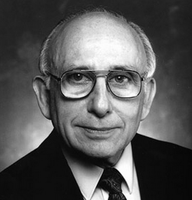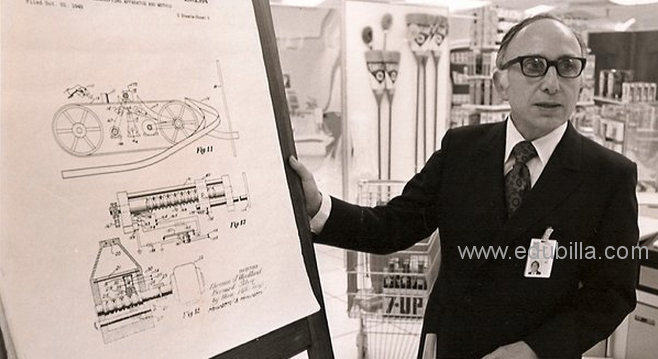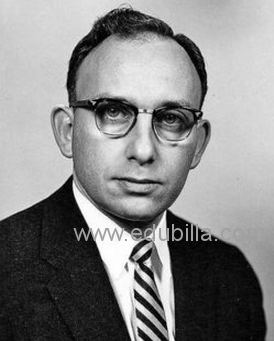










Norman Joseph Woodland was best known as one of the inventors of the barcode, for which he received US Patent 2,612,994 in October 1952.
Woodland was born in Atlantic City, N.J. and grew up during prohibition — the height of political boss Enoch “Nucky” Johnson’s power, as fictionalized in the HBO series Boardwalk Empire. During the Second World War he worked on the secretive the Manhattan Project, the military program which led to the development of the atomic bomb. While studying at what is now Drexel University, his friend Silver overheard a conversation in which a supermarket executive implored a university dean to develop a technology to archive product information, according to the New York Times.
Woodland had worked on the Manhattan Project developing the US military's first atomic bombs. Having already earned a mechanical engineering degree, Woodland dropped out of graduate school to work on the barcode idea. He spent time with his grandfather in Miami focusing on developing a code that could symbolically capture details about an item.
The only code Woodland knew was the Morse code he'd learned in the Scouts, his daughter said. One day he drew Morse dots and dashes as he sat on the beach and absent-mindedly left his fingers in the sand where they traced a series of parallel lines.
"It was a moment of inspiration. He said, 'instead of dots and dashes I can have thick and thin bars'," Susan Woodland said.
Woodland and Silver submitted their patent in 1949 for a code patterned on concentric circles that looked like a bull's eye. The patent was issued in 1952. Silver died in 1963.
Woodland joined IBM in 1951 hoping to develop the barcode but the technology wasn't accepted for more than two decades until lasers made it possible to read the code readily, the technology company said.
In the early 1970s, Woodland moved to Raleigh to join a team at IBM's Research Triangle Park in North Carolina. The team developed a barcode-reading laser scanner system in response to demand from grocers wanting to automate and speed checkout while also cutting handling and inventory management costs.
IBM promoted a rectangular barcode that led to a standard for universal product code technology. The first product sold using a UPC scan was a 67-cent package of Wrigley's chewing gum at a supermarket in Troy, Ohio, in June 1974, according to GS1 US, the American affiliate of the global standard-setting UPC body.
Today about 5bn products are scanned and tracked worldwide every day.
National Medal of Technology and Innovation

